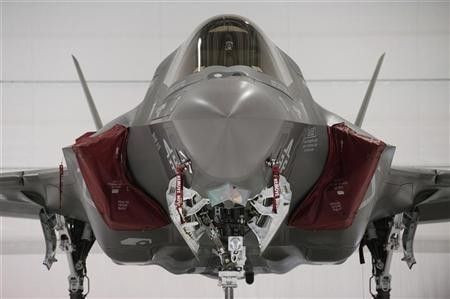F-35 Could Be Delayed Another Four Years, But Pentagon And Lockheed Martin Deny Delays

America’s most expensive military project looks like it may be delayed until 2019 after it was discovered that a software glitch in the ultra-sophisticated F-35 stealth jet could prevent the aircraft from firing its powerful cannon, according to the Daily Beast. The jet, which costs about $161.1 million each and will set back the U.S. taxpayer nearly $400 billion in total, has been scheduled to enter service next year.
“There will be no gun until [the Joint Strike Fighter’s Block] 3F [software], there is no software to support it now or for the next four-ish years,” said one Air Force official affiliated with the F-35 program cited in the Daily Beast report. “Block 3F is slated for release in 2019, but who knows how much that will slip?”
The website also cited a separate source within the Air Force who confirmed that the software would be delayed by upwards of fours years from its current 2015 release date.
In response, a Joint Strike Fighter press team email to the International Business Times said that the "aircraft is not delayed by four years" and that "the cannon is intentionally scheduled for full deployment functionality in 2019." According to that email, the F-35 is still in the development phase, and will not reach full-rate production until 2020. "At that time, if its capabilities do not reflect those prescribed by the Joint Chiefs of Staff, the US Services and/or our international partners, THEN it would be accurate and fair to report that there are significant problems or delays," noted the email.
The 25 mm cannon in question already has some limitations. While the GUA-22, a four-barreled rotary cannon, has been developed from a previous U.S. Marine Corps design, its functionality has already been greatly diminshed. The Marine's GUA-12/U-cannon, which the F-35's cannon is designed from, shoots 3,300 round per minute. The F-35 version will only carry 180 rounds, although it will be more accurate.
Already, the aircraft has been hit by delays, increased costs and a number of glitches since building began in 2011. While costs have more than doubled, the aircraft is already six years behind schedule.
In total, the Pentagon is scheduled to buy 2,443 jets that will be split across the three services, including the Marines. However, without the use of the cannon the aircraft will be unable to support troops on the ground, one of the main reasons it has been heralded as a replacement for the aging A-10 aircraft, which continues to operate against the Islamic State group in Iraq despite being around 40 years old.
Among critics, which includes administration officials who acknowledged the aircraft’s problems in a January report, William Hartung of the Center for International Policy, said the F-35 is too small to be a bomber, too vulnerable to effectively support ground troops and too cumbersome in dogfights.
The aircraft will certainly come into service eventually, but Sen. John McCain, R-Ariz., who will soon be the chairmen of the Senate Armed Service Committee, has made it clear that large military projects like the F-35 will come under increased scrutiny, especially given the forced budget sequestration facing the military in 2016.
© Copyright IBTimes 2024. All rights reserved.






















